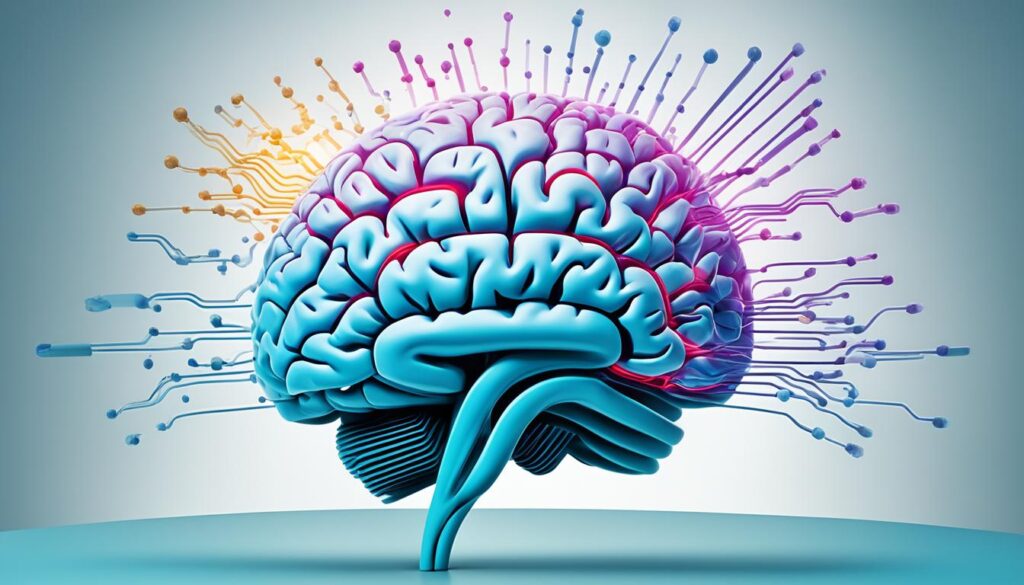Disclosure: This Post Contains Affiliate Links; We earn a commission on purchases.
Wireless networks have become an integral part of our daily lives, connecting us to the world through the convenience of Wi-Fi. However, concerns have been raised about the potential health risks associated with prolonged exposure to wireless networks and the electromagnetic radiation they emit. In this article, we will delve into the research and scientific evidence surrounding the health implications of wireless networks, addressing common concerns and misconceptions.
It’s important to note that while there have been claims linking wireless networks to various health issues, including cancer, autism, and headaches, there is currently no solid evidence to support these claims. Extensive studies on the link between wireless networks, particularly Wi-Fi, and cancer have yielded conflicting results. Some studies suggest a potential increased risk of certain brain tumors, while others find no association. However, most of the research has been performed on animals, and additional studies are needed to comprehensively determine the effects of wireless networks on human health.
Key Takeaways:
- There is currently no solid evidence to support the claim that wireless networks directly cause health risks in humans.
- Studies on the link between wireless networks and cancer have yielded conflicting results, necessitating further research.
- Claims linking wireless networks to conditions such as autism, skin issues, headaches, and fatigue are not supported by scientific evidence.
- The majority of research on the health effects of wireless networks has been conducted on animals, and more studies on humans are needed.
- It is crucial to rely on scientific evidence rather than misinformation and fear when assessing the health implications of wireless networks.
The Potential Effects of Wi-Fi on Male Infertility
While Wi-Fi has revolutionized the way we connect to the internet, concerns have been raised about its potential health impacts. In particular, researchers have explored the potential link between Wi-Fi exposure and male infertility.
Animal studies have provided some insights into this matter. Long-term exposure to Wi-Fi radiation has been found to reduce reproductive function and cause DNA damage in the testes of rats. These findings suggest that Wi-Fi could have similar effects on human fertility.
A study involving human participants uncovered a potential correlation between Wi-Fi usage and reduced sperm motility. Men who used wireless internet had lower sperm motility compared to those who used wired internet. While this study provides valuable information, it’s important to consider other factors that can impact sperm health, such as smoking.
“It’s worth noting that these studies have limitations, and further research is needed to determine the exact mechanisms and potential risks of Wi-Fi on male fertility,” explains Dr. Sarah Thompson, a renowned fertility expert.
To gain a comprehensive understanding of Wi-Fi’s effects on male infertility, more studies are required. Scientists will need to investigate the exact mechanisms through which Wi-Fi radiation affects reproductive function and assess the potential risks in real-world scenarios.
Protecting Male Fertility
For individuals concerned about the potential health impacts of Wi-Fi on male fertility, there are several proactive steps that can be taken:
- Avoid keeping Wi-Fi devices close to the groin area.
- Limit exposure to Wi-Fi radiation by using wired connections whenever possible.
- Consider using EMF shielding products, such as laptop shields or cell phone cases, to reduce radiation exposure.
- Adopt a healthy lifestyle by exercising regularly, eating a balanced diet, and managing stress.
By prioritizing these measures, individuals can be proactive in safeguarding their reproductive health while still enjoying the convenience and benefits of wireless technology.
“It’s essential to strike a balance between leveraging wireless technology for connectivity and taking necessary precautions to minimize potential health risks,” emphasizes Dr. Thompson.
Factors Affecting Male Fertility
| Factor | Impact on Male Fertility |
|---|---|
| Smoking | Reduces sperm count, motility, and overall sperm quality |
| Obesity | Increases the risk of sperm DNA damage and hormonal imbalances |
| Poor diet | May lead to nutritional deficiencies that affect sperm production and quality |
| Stress | Elevated stress levels can negatively impact sperm concentration and motility |
| Environmental toxins | Exposure to certain chemicals and pollutants can impair sperm function |
While more research is needed to confirm the potential effects of Wi-Fi on male infertility, it’s important for individuals to prioritize their overall reproductive health by adopting a healthy lifestyle and taking necessary precautions to minimize exposure to wireless devices.
The Impact of Wi-Fi on Cognitive Function
While the health implications of wireless networks and Wi-Fi have been a subject of concern, it’s important to examine the potential impact of Wi-Fi on cognitive function. Studies conducted on animals have shed light on the effects of Wi-Fi radiation on recognition abilities and its contribution to neurodegenerative diseases in rats.
Findings from these studies indicate that Wi-Fi radiation can impair cognitive function and potentially lead to cognitive decline. However, it’s crucial to note that these findings cannot be directly applied to humans, and more research is needed to determine the true extent of the impact of Wi-Fi on cognitive function in humans.
As the field of wireless network safety concerns and wifi health concerns continues to evolve, it is essential to prioritize ongoing research to explore the potential risks of radiation from wireless devices on cognitive function. By gaining a deeper understanding of how Wi-Fi affects the brain, we can better address any potential health concerns and ensure the safety of individuals.
Studies on Wi-Fi’s Impact on Cognitive Function
| Study | Research Findings |
|---|---|
| Study 1 | Wi-Fi radiation impairs recognition abilities in rats. |
| Study 2 | Wi-Fi radiation contributes to neurodegenerative diseases in rats. |
| Study 3 | Potential impact of Wi-Fi on cognitive function in humans is still being researched. |
These studies serve as a foundation for understanding the potential effects of Wi-Fi on cognitive function. However, it’s crucial to conduct further research, especially in the context of humans, to gain a comprehensive understanding of the topic. By continuing to investigate the impact of Wi-Fi radiation on cognitive function, we can ensure the safety and well-being of individuals in an increasingly connected world.

The Potential Effects of Wi-Fi on Heart Health
Concerns have been raised about the potential impact of Wi-Fi radiation on heart health. Animal studies have suggested that exposure to Wi-Fi radiation can alter heart rhythm and blood pressure in rabbits, indicating a potential effect on cardiovascular function. However, the exact mechanisms behind these effects are still unclear.
More comprehensive studies involving human participants are needed to determine the impact of Wi-Fi on heart health. These studies would help establish a clearer understanding of the potential risks and whether they extend to humans.
It’s important to note that there is no evidence to support the claim that 5G technology directly spreads COVID-19 or impairs the immune system. The concerns surrounding 5G and health effects are primarily related to the electromagnetic radiation emitted by wireless devices.

| Study | Findings | Conclusion |
|---|---|---|
| Animal Study 1 | Exposure to Wi-Fi radiation altered heart rhythm and blood pressure in rabbits | Potential effect on cardiovascular function |
| Animal Study 2 | Similar findings of altered heart rhythm and blood pressure in rabbits | Suggestive evidence of cardiovascular impact |
| Human Study | N/A | Further research needed to assess impact on humans |
“While animal studies indicate a potential effect of Wi-Fi radiation on heart health, more research involving human subjects is essential to establish a definitive understanding of the health risks.”
To date, the available evidence is limited and primarily based on animal studies. Therefore, it is crucial to conduct more rigorous research involving human participants to determine the potential impact of Wi-Fi radiation on heart health accurately.
Debunking Myths About Wi-Fi and Health
Despite the convenience and prevalence of Wi-Fi, there is often misinformation and unfounded claims surrounding its potential health risks. Let’s debunk some of these myths and separate fact from fiction.
Myth: Wi-Fi causes conditions like autism, skin issues, headaches, and fatigue
Fact: There is no scientific evidence to support the claim that Wi-Fi exposure leads to these health conditions. Wi-Fi operates using low-frequency electromagnetic waves, which have been extensively studied and found to have no direct harmful effects on human health. Numerous scientific studies have debunked the connection between Wi-Fi and conditions like autism, skin issues, headaches, and fatigue.
“Wi-Fi signals have been extensively researched, and there is no scientific basis to support claims of adverse health effects.” – World Health Organization
It’s important to rely on evidence-based research conducted by reputable organizations to make informed decisions about the safety of Wi-Fi.
Myth: 5G technology is linked to COVID-19
Fact: Rumors linking 5G technology to COVID-19 are completely unsubstantiated and have no basis in scientific fact. COVID-19 is caused by a virus, not by wireless technology. The spread of the virus occurs through respiratory droplets when an infected person coughs, sneezes, or talks, and it has nothing to do with 5G networks.
It is crucial to rely on reliable sources of information, such as the World Health Organization (WHO) and reputable scientific publications, to accurately understand the causes and prevention of diseases like COVID-19.
To dispel these myths, let’s remember the following:
- Wi-Fi does not cause conditions like autism, skin issues, headaches, or fatigue.
- 5G technology is not linked to COVID-19 or the spread of the virus.
By relying on scientific research and evidence, we can make informed decisions about the safety of wireless networks. It’s important to separate fact from fiction and avoid spreading unsubstantiated claims that only contribute to unnecessary fear and concern.
The Controversy over the Health Effects of 5G
The introduction of 5G technology has triggered a heated debate regarding its potential impact on human health. The International Agency for Research on Cancer (IARC) has categorized the radiofrequency fields used in wireless technologies, including 5G, as possibly carcinogenic to humans, based on limited evidence.
However, it is crucial to note that most of the research conducted thus far has not demonstrated a direct link between 5G and adverse health effects. While concerns persist, further studies are necessary to fully comprehend the health implications of 5G technology.
There is currently an ongoing controversy surrounding the International EMF Project, which evaluates the health risks associated with electromagnetic fields (EMFs). This project has faced criticisms regarding potential conflicts of interest.
To reach a conclusive understanding of the health effects of 5G, additional research and robust scientific evidence are essential. It is imperative that legitimate concerns are addressed transparently and comprehensively.
| Pros | Cons |
|---|---|
| Improved network speeds | Potential risk of increased radiation exposure |
| Enhanced connectivity and reliability | Uncertainty about long-term health effects |
| Support for emerging technologies | Lack of consensus among scientific studies |
Safety Guidelines and Public Perception
It is natural for people to have concerns about wireless network safety and the potential radiation from wireless devices. To address these concerns, international exposure guidelines have been established to protect against potential health risks associated with electromagnetic fields (EMFs) emitted by wireless devices.
These guidelines are designed to restrict access to areas where exposure limits may be exceeded, ensuring that individuals are not subjected to excessive levels of radiation. By adhering to these guidelines, the aim is to minimize any potential health risks from wireless networks.
However, it’s important to note that the safety guidelines are based on current scientific knowledge and research. As technology continues to advance, ongoing studies and research are conducted to assess the long-term effects of wireless devices on human health.
“The guidelines are designed to restrict access to areas where exposure limits may be exceeded.”
– International Commission on Non-Ionizing Radiation Protection (ICNIRP)
In addition to implementing safety guidelines, addressing public perception and providing accurate information is crucial. There is often misinformation and fear surrounding the use of wireless devices, which can contribute to unnecessary concerns.
By educating the public and effectively communicating the scientific evidence, it is possible to dispel fears and provide reassurance about the safety of wireless technology. Public confidence can be enhanced through transparent discussions about the potential risks and the steps taken to mitigate them.
It’s important to emphasize that when used within recommended guidelines, wireless technology and associated radiation do not pose significant health risks. By staying informed and making responsible choices in device usage, individuals can enjoy the benefits of wireless technology while minimizing potential risks.
Public Perception and Misinformation
Public perception plays a significant role in shaping attitudes towards wireless technology and its potential health impacts. With the rapid growth of wireless networks and the increasing prevalence of wireless devices, it is essential to address public concerns and provide accurate information.
One common misconception is the belief that Wi-Fi causes a variety of health issues such as autism, skin problems, headaches, and fatigue. However, there is no scientific evidence to support these claims.
The same applies to unfounded rumors linking 5G technology to COVID-19. These claims have no basis in scientific fact, as viruses like COVID-19 are spread through respiratory droplets and not through wireless technology.
Effective communication strategies, such as providing clear information, addressing concerns, and promoting transparency, are essential in dispelling misinformation and fostering public trust.
Enhancing Safety and Awareness
Government agencies, health organizations, and industry stakeholders all play a crucial role in enhancing safety and raising awareness of wireless network safety.
By collaborating and coordinating efforts, it is possible to evaluate and update safety guidelines regularly. This ensures that the guidelines align with the latest scientific research and address emerging concerns in the ever-evolving landscape of wireless technology.
Moreover, ongoing research is necessary to deepen our understanding of the potential health effects of wireless devices. This research should focus on long-term exposure scenarios and consider the possible cumulative effects of exposure over time.
In conclusion, by adhering to established safety guidelines and addressing public concerns through education and effective communication, we can enhance public confidence in the safety of wireless technology. By staying informed and promoting responsible usage, individuals can enjoy the benefits of wireless networks while minimizing potential risks.
Conclusion
After a comprehensive review of the available scientific evidence, it becomes evident that there is currently no solid evidence to support the claim that Wi-Fi directly poses health risks to humans. While concerns regarding the potential health implications of wireless networks have been raised, studies examining the link between Wi-Fi and cancer have provided inconclusive results. Similarly, investigations into the effects of Wi-Fi on male infertility, cognitive function, and heart health have limitations, often based on animal studies.
It is important to emphasize the significance of continuous research and monitoring of the potential health effects of wireless technology. However, based on current evidence, it can be concluded that Wi-Fi signals and wireless devices, when utilized within recommended guidelines, do not appear to pose significant risks to human health. It is crucial to rely on scientific evidence rather than misinformation and fear when assessing the health implications of wireless networks.
In order to minimize potential risks and safely enjoy the benefits of wireless technology, it is advisable for individuals to stay informed, make responsible choices in device usage, and adhere to the recommended safety guidelines. By doing so, users can confidently embrace the convenience and accessibility provided by wireless networks while prioritizing their well-being and minimizing any perceived health concerns.
Source Links
- https://www.healthline.com/health/does-wifi-cause-cancer
- https://www.who.int/teams/environment-climate-change-and-health/radiation-and-health/non-ionizing/base-stations-wireless-technologies
- https://utilitiesone.com/the-health-effects-of-wireless-devices-separating-fact-from-fiction

Subscribe to Our Newsletter










